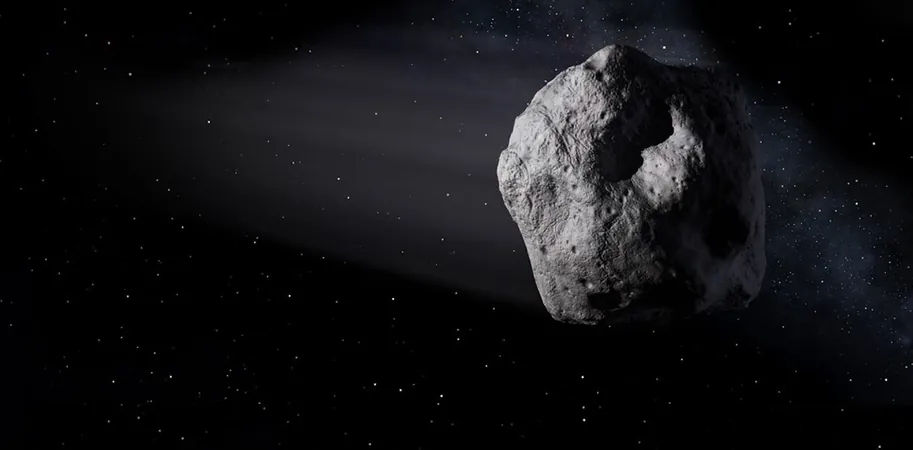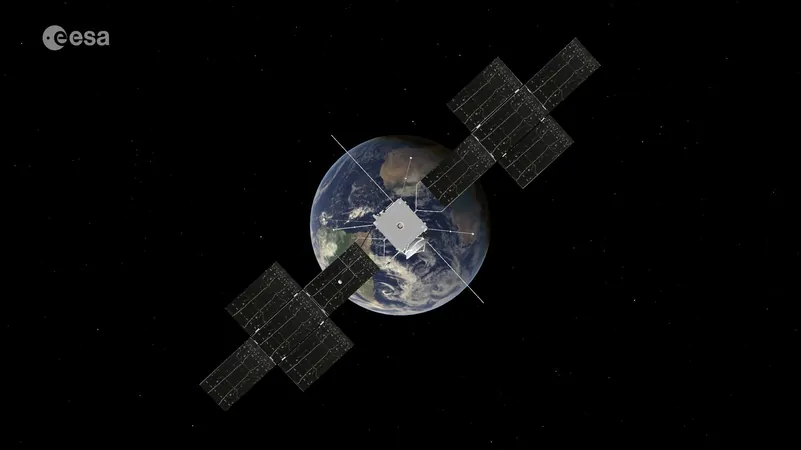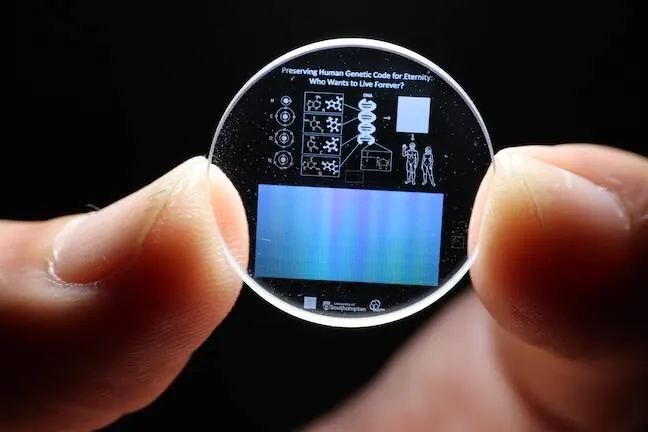
Astronomers Make Strides in Asteroid Detection—Could We Prevent the Next Catastrophic Impact?
2024-09-17
Introduction
On September 4, 2024, astronomers achieved a remarkable feat by detecting a small asteroid, designated RW1, just moments before it entered Earth's atmosphere. Measuring only 1 meter in diameter, this space rock harmlessly disintegrated over the Philippines, creating an awe-inspiring fireball that captivated social media users worldwide. This event marked just the ninth time that scientists have spotted an asteroid before it made contact with Earth, raising critical questions about our capabilities to track far more dangerous threats lurking in the cosmos.
Historical Context
Asteroid impacts have played a significant role throughout the history of our solar system, from shaping planetary landscapes to influencing the development of life on Earth. Notably, the catastrophic collision 66 million years ago with a 10-kilometer-wide asteroid is believed to have triggered the mass extinction event that wiped out the dinosaurs, aside from birds. This historical perspective heightens the urgency of improving our asteroid detection systems, especially in light of the fact that about 66% of the known asteroid impacts on Earth remain untracked.
Understanding Near-Earth Objects (NEOs)
Most asteroids are remnants from the early solar system that never coalesced into planets or moons. These space rocks vary dramatically in size and trajectory, and can, to varying degrees, be predicted based on their gravitational interactions. As of September 2024, astronomers monitor approximately 36,000 near-Earth objects (NEOs), yet statistical models suggest that up to 1 billion NEOs may exist, many of which remain unidentified and could pose significant risks.
Advancements in Detection
Since the late 1980s, scientists have ramped up efforts to locate and track these NEOs, increasingly utilizing advanced telescopic techniques. Telescopes now scan the night sky and compare images to identify moving asteroids. The challenge arises from the sheer volume of small, relatively dim objects that exist, many likely capable of causing localized damage despite their smaller size. Predicting the trajectories of these objects is particularly treacherous due to gravitational influences from larger celestial bodies.
Funding and Technological Innovations
In 2023, NASA allocated a budget of $90 million to enhance its NEO monitoring capabilities. Numerous innovative projects are underway to better detect and analyze hazardous asteroids, including the Sutter Ultra project and NASA's upcoming NEOsurveyor infrared telescope mission. An exciting development in asteroid defense also came from the Dart mission, which successfully collided with an asteroid's moon to change its trajectory. While the results show that altering an asteroid's path is conceptually possible, we remain far from having a comprehensive solution available in an emergency.
Data Challenges and Solutions
Asteroid detection generates a massive amount of image data daily, posing a significant challenge for researchers. The application of artificial intelligence and citizen science initiatives could help streamline data analysis and enhance our understanding of potential threats.
Current Monitoring Trends
The evolving landscape of monitoring strategies has already shown promise. For instance, RW1's detection, albeit brief, illustrates that we are making strides in predicting even small asteroid impacts. While asteroids smaller than 25 meters predominantly burn up upon atmospheric entry, those between 25 and 1,000 meters can potentially survive and cause localized destruction. For perspective, an asteroid measuring approximately 140 meters could inflict widespread devastation if it were to strike a densely populated urban area.
Future Projections
Fortunately, larger asteroids are rare, hitting Earth every couple of thousand years on average. Current estimates indicate we have identified 38% of NEOs larger than 140 meters. With the anticipated capabilities of the Vera Rubin telescope, that figure could rise to about 60% by 2025, while the NEOsurveyor could help identify around 76% of sizable asteroids by 2027.
Global Calamities and Preparedness
Yet, the larger and rarer asteroids exceeding 1 kilometer in diameter represent the greatest potential for global calamity. Thankfully, since 2011, we believe we've detected 98% of these dangers. However, we remain without a reliable strategy to divert these threats, emphasizing the necessity of continued research and experimentation.
Conclusion
Though our awareness of asteroids is improving, a complete inventory of objects that could inflict localized damage—like destroying entire cities—remains an elusive goal. Continuous monitoring and innovative detection techniques are crucial, enabling us to devise effective early warning systems. With the right tools and strategies, humanity can enhance its preparedness and response capabilities against the next catastrophic asteroid event.



 Brasil (PT)
Brasil (PT)
 Canada (EN)
Canada (EN)
 Chile (ES)
Chile (ES)
 España (ES)
España (ES)
 France (FR)
France (FR)
 Hong Kong (EN)
Hong Kong (EN)
 Italia (IT)
Italia (IT)
 日本 (JA)
日本 (JA)
 Magyarország (HU)
Magyarország (HU)
 Norge (NO)
Norge (NO)
 Polska (PL)
Polska (PL)
 Schweiz (DE)
Schweiz (DE)
 Singapore (EN)
Singapore (EN)
 Sverige (SV)
Sverige (SV)
 Suomi (FI)
Suomi (FI)
 Türkiye (TR)
Türkiye (TR)